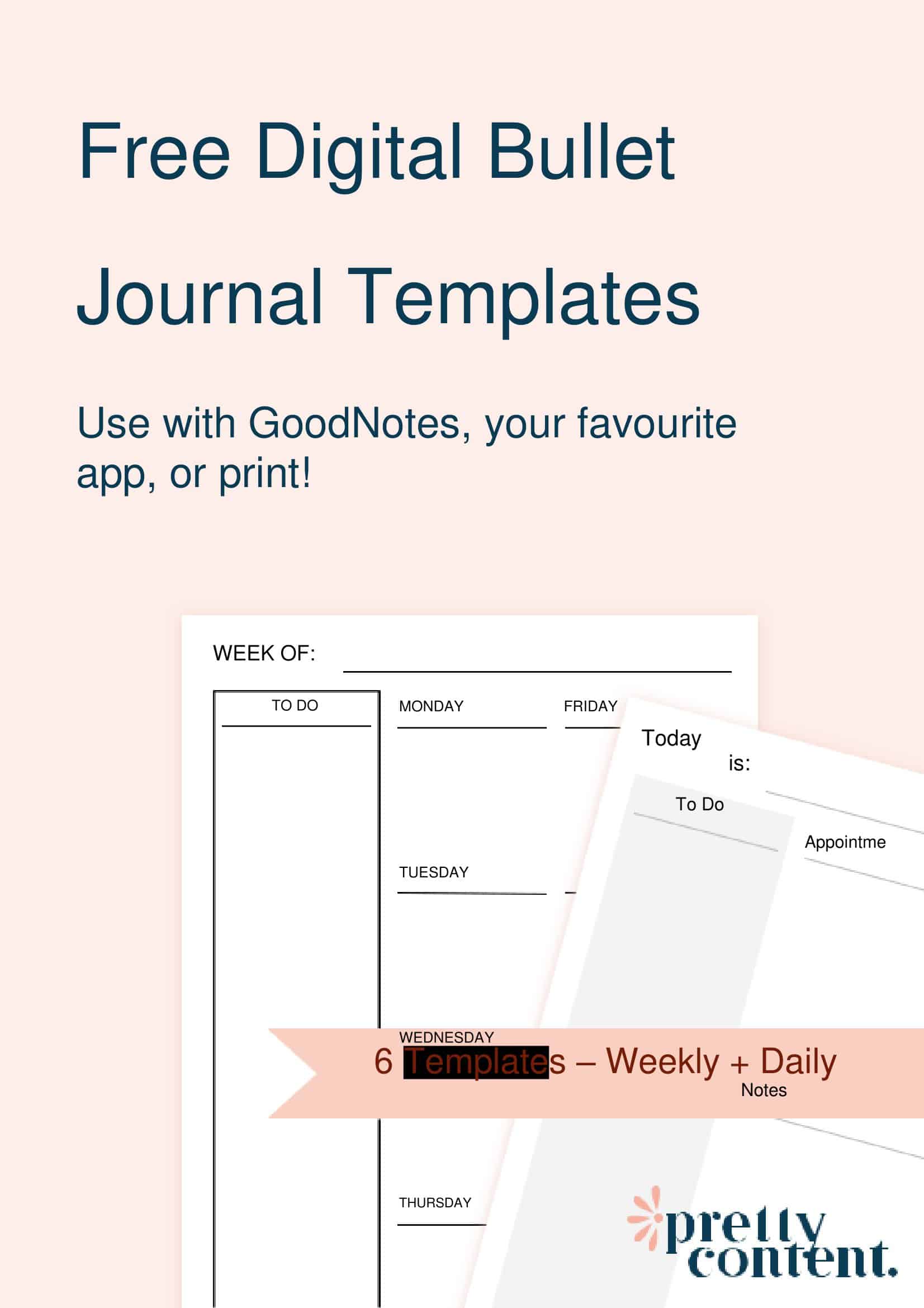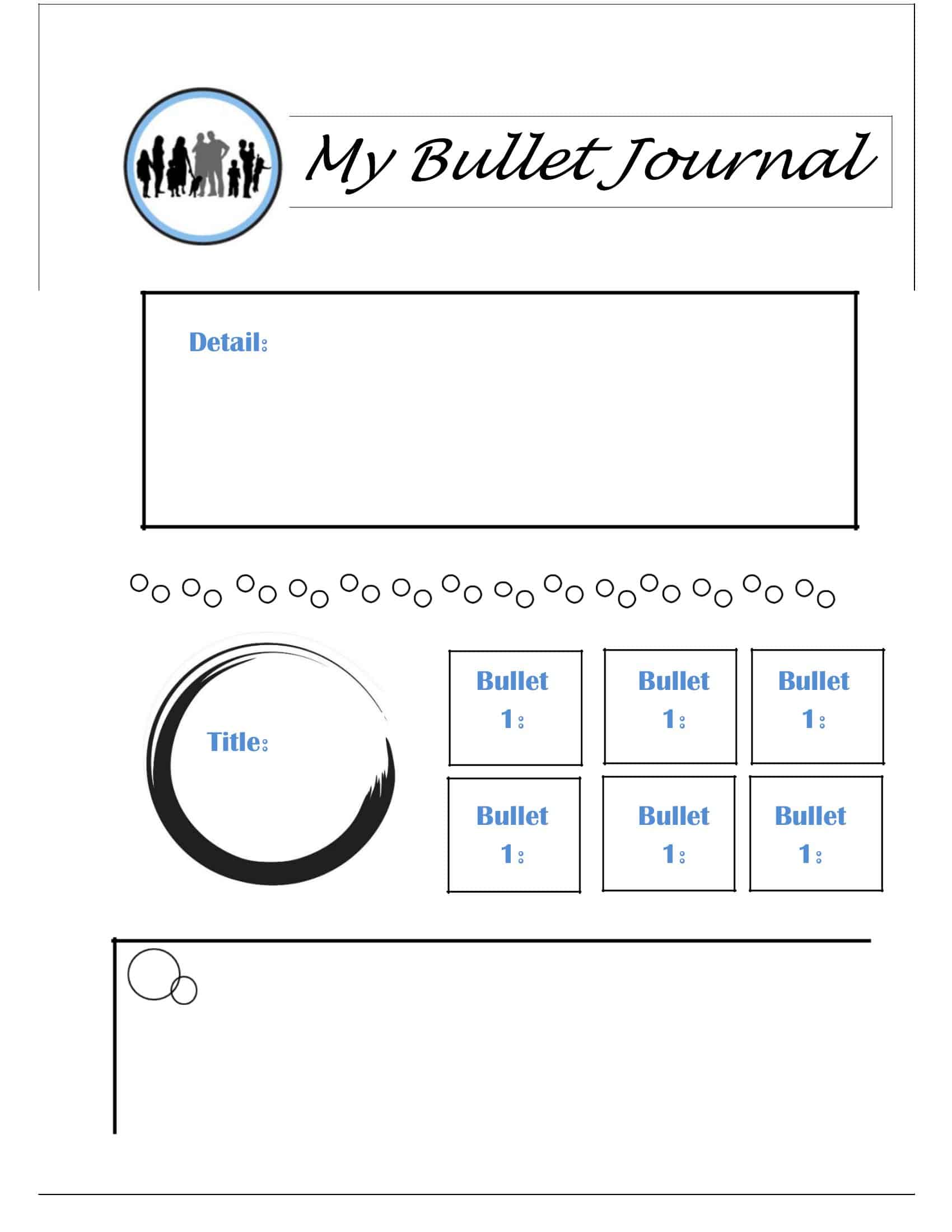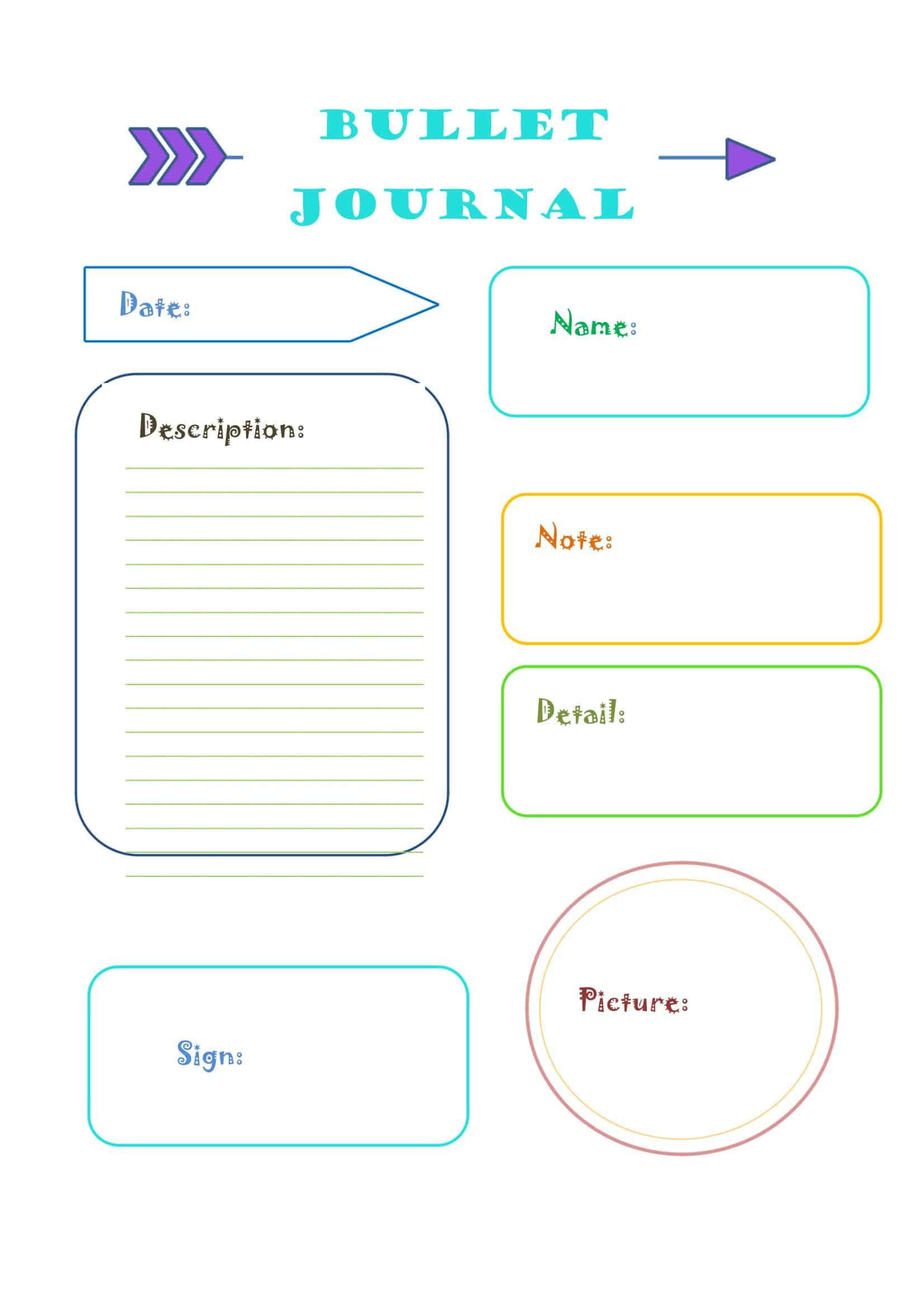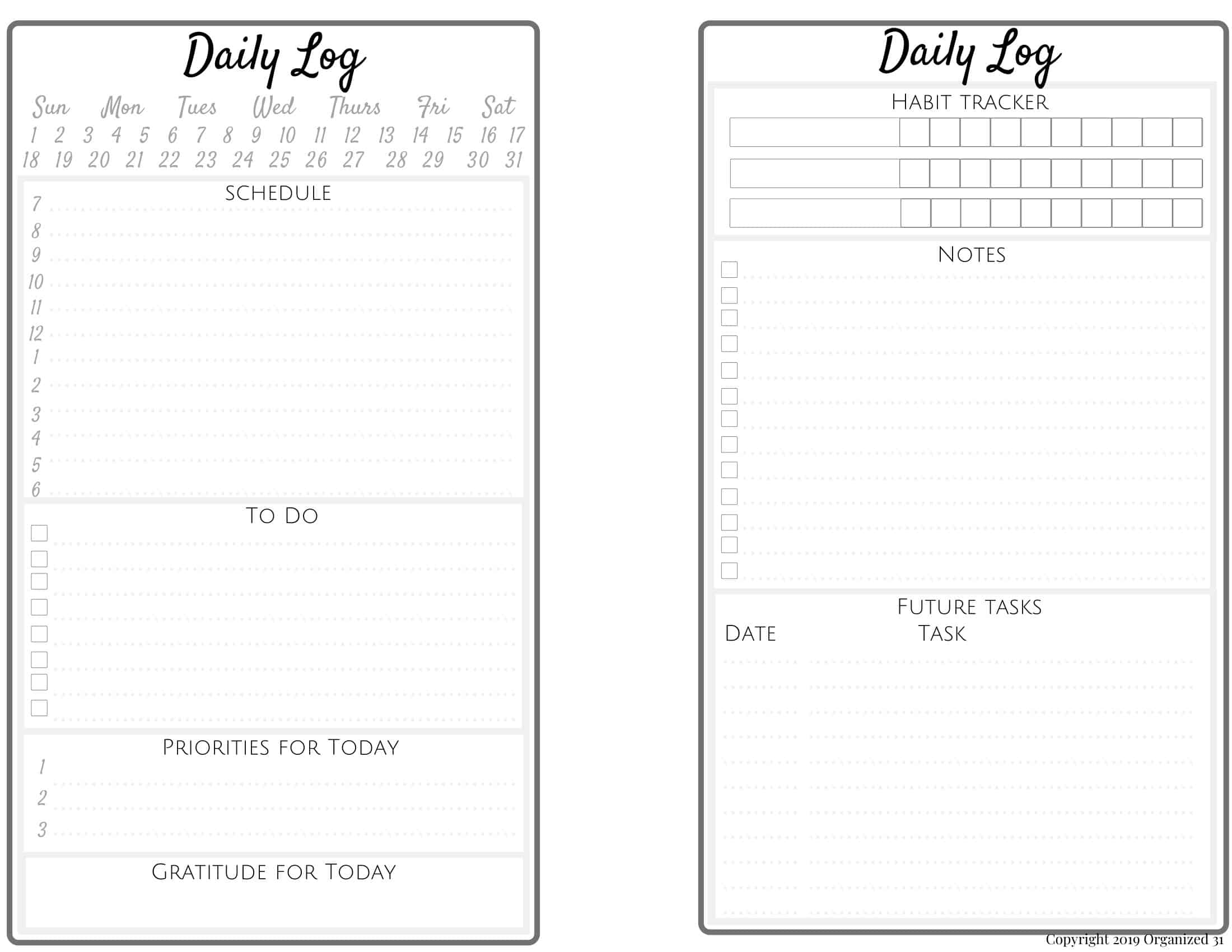Bullet journaling has become an increasingly popular way to stay organized and focused in our fast-paced lives. With the rise of digital planners and apps, many people are turning back to the simplicity and flexibility of pen and paper.
In this content, we will explore beautiful bullet journal templates that you can use to organize your life effectively. Whether you are a seasoned bullet journal enthusiast or just starting out, these templates are sure to inspire and help you on your organizational journey.
Table of Contents
What is a bullet journal?

Before we delve into the world of bullet journal templates, let’s take a moment to understand the basics of bullet journaling. Created by Ryder Carroll, the bullet journal method is a versatile and customizable system that allows you to keep track of your tasks, events, and goals all in one place. With a few simple elements like bullet points, signifiers, and collections, you can effectively plan and organize your life with ease.
The Concept of Bullet Journaling
So, what exactly is bullet journaling? At its core, bullet journaling is a combination of a to-do list, planner, and journal. It is a way to keep track of your tasks, events, appointments, and thoughts in a single notebook. The system revolves around rapid logging, a method of jotting down information in a concise and efficient manner. By using symbols and bullet points, you can quickly note down your tasks, events, and thoughts, and turn them into actionable items.
Benefits of Bullet Journaling
Now that we know what bullet journaling is, let’s explore the benefits it offers. First and foremost, bullet journaling allows you to have a clear overview of your tasks and events. By having everything in one place, you can easily see what needs to be done and plan accordingly. Additionally, bullet journaling encourages mindfulness and reflection. By incorporating daily gratitude logs and habit trackers, you can develop a greater sense of awareness and focus on self-improvement.
Another benefit of bullet journaling is its flexibility. Unlike pre-designed planners, bullet journals can be customized to suit your unique needs and preferences. You can create different sections for work, personal life, fitness goals, or any other area you want to focus on. This level of customization allows you to tailor your bullet journal to your specific lifestyle and priorities.
Furthermore, bullet journaling promotes creativity and self-expression. With the freedom to design your own layouts and add artistic elements, such as hand-lettering or doodles, you can make your bullet journal a reflection of your personality. This creative aspect not only makes the journaling process more enjoyable but also enhances your engagement with the content.
Lastly, bullet journaling can help improve time management and productivity. By breaking down your tasks into smaller, actionable steps and assigning them specific deadlines, you can prioritize effectively and stay on track. The act of physically writing down your goals and plans also aids in memory retention and enhances your focus on the tasks at hand.
Bullet Journal Templates
Now that we have a solid understanding of bullet journaling, let’s dive into the world of templates. Templates serve as a starting point to customize and personalize your bullet journal according to your needs and preferences. Below, we will explore three different types of templates: daily logs, monthly logs, and future logs.
Daily Log Templates
The daily log template is the backbone of your bullet journal. It allows you to plan and track your tasks and appointments on a daily basis. You can use a simple list format or get creative with a grid layout. The key is to find a format that works best for you. Consider incorporating sections for time-blocking, meal planning, or habit tracking to further enhance your daily log.
Imagine waking up in the morning, opening your bullet journal, and seeing a beautifully designed daily log template waiting for you. With each task and appointment neatly organized, you feel a sense of clarity and purpose for the day ahead. The grid layout, adorned with delicate floral illustrations, brings a touch of nature to your planning process. As you fill in the time-blocking section, you can visualize your day, ensuring that you allocate enough time for each activity. The habit tracking section, with its vibrant colors, motivates you to stay consistent and achieve your goals. Your daily log becomes a reflection of your unique style and a tool that empowers you to conquer each day with intention.
Monthly Log Templates
The monthly log template provides a high-level overview of your month. It allows you to set goals, plan events, and track milestones. You can choose to create a calendar-style monthly log or create a more minimalistic layout. Consider incorporating a habit tracker, gratitude log, or a goals tracker to elevate your monthly log and keep you motivated throughout the month.
Picture flipping through the pages of your bullet journal and stumbling upon your monthly log template. The calendar-style layout greets you with a sense of anticipation and excitement for the month ahead. As you fill in the important dates and events, you can’t help but feel a surge of motivation to accomplish your goals. The habit tracker, nestled in the corner, serves as a gentle reminder to stay consistent with your daily habits. The gratitude log, adorned with inspiring quotes, encourages you to find joy in the little things and cultivate a positive mindset. Your monthly log becomes a visual representation of your aspirations, guiding you towards a fulfilling and purposeful month.
Future Log Templates
As the name suggests, the future log template helps you plan ahead and keep track of important dates and events. It serves as a centralized place to note down birthdays, anniversaries, holidays, and any other significant events. Consider using a calendar layout or a simple list format. Personalize your future log by adding monthly themes or color-coding to make it visually appealing and easy to navigate.
Imagine flipping to the future log section of your bullet journal and being greeted by a beautifully designed calendar layout. Each month is adorned with a unique theme, reflecting the changing seasons and capturing your imagination. As you fill in the important dates and events, you can’t help but feel a sense of excitement for the future. The color-coded categories make it easy to navigate through the pages, ensuring that you never miss a birthday or anniversary. Your future log becomes a visual roadmap, guiding you through the year and helping you stay organized amidst the busyness of life.
How to Choose the Right Bullet Journal Template

Now that we have explored different bullet journal templates, you might be wondering how to choose the right one for yourself. The key is to assess your needs and consider your lifestyle. Here are a few steps to help you choose the perfect bullet journal template:
Assessing Your Needs
Start by assessing what you need to track and organize in your life. Are you primarily focused on work-related tasks and deadlines? Or do you want to incorporate personal goals and habits? Understanding your specific needs will enable you to select a template that aligns with your priorities and helps you stay on track.
Considering Your Lifestyle
Consider your lifestyle when choosing a bullet journal template. Are you someone who prefers detailed planning with hourly appointments? Or do you prefer a more flexible approach? Think about how much time you can dedicate to your bullet journal each day and choose a template that suits your lifestyle and allows you to be consistent.
Once you have assessed your needs and considered your lifestyle, it’s time to dive deeper into the world of bullet journaling templates. Let’s explore some popular options:
The Minimalist Template
If you prefer a clean and simple design, the minimalist template might be the perfect fit for you. This template focuses on functionality and provides ample space for you to jot down your tasks and appointments. With its minimalist aesthetic, it allows you to focus on the content of your journal without any distractions. Whether you are a student, a professional, or a busy parent, this template will help you stay organized and efficient.
The Creative Template
If you have a flair for creativity and enjoy adding artistic elements to your journal, the creative template is an excellent choice. This template encourages you to unleash your imagination and experiment with different colors, doodles, and lettering styles. It’s a great option for those who find joy in the process of journaling and want to infuse their personality into every page. With the creative template, your bullet journal becomes not only a tool for organization but also a form of self-expression.
Remember, there is no one-size-fits-all approach when it comes to bullet journal templates. It’s all about finding what works best for you and adapting it to your unique needs and preferences. So take your time, explore different templates, and don’t be afraid to mix and match elements from various styles. The beauty of bullet journaling lies in its flexibility and ability to evolve with you over time.
Customizing Your Bullet Journal Template
Once you have selected a template that resonates with you, it’s time to customize and make it your own. Here are a couple of ways you can add your personal touch:
Adding Personal Touches
Consider adding personal touches to your bullet journal template. This could be in the form of inspirational quotes, artwork, or photographs. Adding personal elements to your journal will make it a truly unique reflection of your personality and keep you motivated throughout your organizational journey.
Imagine flipping through the pages of your bullet journal and stumbling upon a beautifully hand-drawn quote that resonates with you deeply. The words jump off the page, reminding you of your goals and aspirations. Or perhaps you come across a photograph of a serene sunset that instantly transports you to a place of calm and tranquility. These personal touches not only add visual interest to your journal, but they also serve as powerful reminders of what truly matters to you.
Incorporating Colors and Themes
Add a splash of color to your bullet journal by incorporating different color schemes and themes. You can assign different colors to different categories or use a rainbow color scheme to make your journal visually appealing. Experiment with various themes such as nature, travel, or minimalism to find one that resonates with you.
Imagine opening your bullet journal to a page filled with vibrant hues that instantly uplift your mood. The colors dance on the page, bringing a sense of joy and energy to your organizational system. You can assign specific colors to different areas of your life, such as work, personal goals, or self-care, making it easier to visually navigate your journal. Alternatively, you can choose a theme that reflects your interests and passions. If you love nature, incorporate botanical illustrations and earthy tones into your journal. If you have a wanderlust soul, use travel-inspired elements like maps and adventure quotes. The possibilities are endless!
Maintaining Your Bullet Journal
Now that you have customized your bullet journal template, it’s important to establish a routine to maintain it effectively. Here are a couple of tips on how to maintain your bullet journal:
Regular Updates and Reviews
Set aside regular time to update your bullet journal and review your progress. Take a few moments each day to log new tasks and reflect on the events of the day. At the end of each month, review your monthly log and assess your progress towards your goals. This regular review will help you stay organized and motivated.
Dealing with Incomplete Tasks
It’s inevitable that you may have incomplete tasks in your bullet journal. Instead of feeling discouraged, use these incomplete tasks as an opportunity to learn and adjust. Reflect on the reasons why certain tasks were not completed and make necessary adjustments to your future plans. Remember, bullet journaling is a flexible system that allows for growth and adaptation.
In conclusion, bullet journaling is a powerful tool for organizing your life. With the help of these 10 beautiful bullet journal templates, you can transform your journal into a personalized and effective organizational tool. Explore the various templates, choose one that aligns with your needs and lifestyle, and don’t forget to customize it to make it truly your own. Happy journaling!
FAQs
Do I need an artistic talent to start a Bullet Journal?
No, you don’t need to be artistic to start a bullet journal. While many people enjoy adding sketches, doodles, and calligraphy to their journals, these are not required. The primary purpose of a Bullet Journal is to help you stay organized. You can make it as simple or as intricate as you like.
What kind of notebook do I need for Bullet Journaling?
Any notebook can be used for Bullet Journaling, but many people prefer notebooks with dotted or grid pages to aid in layout design. The Leuchtturm1917 and Moleskine notebooks are popular choices. The key is to choose a notebook that suits your preferences and needs.
Can I use a digital app for Bullet Journaling?
While the original Bullet Journal system by Ryder Carroll is an analog system, there are many digital apps available for those who prefer a digital format. Apps like Notion, Evernote, and OneNote can be customized to imitate the Bullet Journal system.
Can I start Bullet Journaling in the middle of the year?
Absolutely! One of the great things about Bullet Journaling is that it doesn’t rely on a fixed calendar like pre-printed planners. You can start a Bullet Journal at any time.
How often should I update my Bullet Journal?
The frequency of updating your Bullet Journal depends on your personal needs and preferences. Some people update their journals daily, while others prefer a weekly or monthly routine.
Can I use a Bullet Journal for school or work?
Yes! A Bullet Journal can be a great tool for managing school or work tasks. You can use it to track assignments, due dates, meeting notes, project plans, and more.
Can I use a Bullet Journal to improve mental health?
Yes, many people use Bullet Journals as a tool for improving mental health. It can serve as a safe space to express thoughts and emotions, track moods, habits, and self-care activities, or practice gratitude. As always, if you’re struggling with mental health issues, it’s also important to seek help from a mental health professional.
































![%100 Free Hoodie Templates [Printable] +PDF 1 Hoodie Template](https://www.typecalendar.com/wp-content/uploads/2023/05/Hoodie-Template-1-150x150.jpg)
![Free Printable Food Diary Templates [Word, Excel, PDF] 2 Food Diary](https://www.typecalendar.com/wp-content/uploads/2023/05/Food-Diary-1-150x150.jpg 150w, https://www.typecalendar.com/wp-content/uploads/2023/05/Food-Diary-1-1200x1200.jpg 1200w)
![Free Printable Roommate Agreement Templates [Word, PDF] 3 Roommate Agreement](https://www.typecalendar.com/wp-content/uploads/2023/06/Roommate-Agreement-150x150.jpg)
